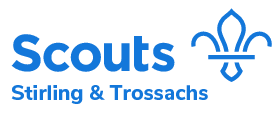Invertrossachs Safety Boat
Introduction
To operate the Safety Boat you must have a RYA Power Boat Level 2 qualification or higher. However you do NOT require to have a Scout Power Boat Permit.
When operating as a Safety Boat there should be second person in the boat to assist.
In addition to this you must have attended an Invertrossachs Induction to become familiar with the boat, outboard, equipment generally and “The Scouting environment”
The definition of a Safety Boat in a Scouting context is that it is an optional addition to providing safety cover during an activity. The Activity permit holder (e.g. kayak or canoe instructor) is in charge of the Activity. He/she should be capable of controlling the group and carrying out all necessary rescues. The safety boat crew should only intervene or assist when requested by the permit holder, or in an emergency if someone is in distress.
DO NOT rush in to the rescue; you are more likely to cause panic and confusion. Approach the casualty carefully, keeping well clear of other craft and when close enough put the outboard into neutral or better still cut the engine, as you do not want the propellor blades to injure the person in the water. Get guidance from the instructor (preferably before the activity) as to what he/she wants done (i.e. stay by casualty until the instructor arrives, or recover kayak and get person back in their boat, or take person to shore etc.)
The only time a Safety Boat can carry youth members is in rescue situations.
Power Boat Permit
You can apply for a Power Boating permit – links are below
https://members.scouts.org.uk/fs120659
https://members.scouts.org.uk/ac120928
This will allow you to take young people out in a power boat and train them in the skills of power boating.
The Safety Boat should not be regarded as a plaything, and young people should only be taken out on a genuine educational activity (e.g. as part of the Power Coxswain Activity Badge). Remember that we share Loch Venachar with the boats from the fishing centre, the sailing club, wild water swimmers and ocassional random craft, so we must always operate the safety boat with care and condsideration of other users.
The Boat - Janneau Rigiflex Newmatic 360
Mounted on Launching trolley.
Carries up to 5 adults even when swamped (allegedly) due to it’s inherent buoyancy
Self bales (with current engine size only at full throttle), and with probably a maximum of 2 crew.
Rigged as a Safety boat – ropes for towing attached. (Beware dangling ropes which could snag your propellor.)
Rope boarding ladder added. Spare paddles, baler, and an Emergency Kit comprising, spare kill-cord, spare bung, first aid kit, foil blankets. All kept with the outboard in a locked cage in bellboat shed.
The Outboard – Mariner 4-stroke 6 HP Engine
This is kept in the cage with the fuel tank, which should always be at least half full, and fuel hose.
The main difference compared to 2-stroke is that no oil is added to the petrol – the engine has an oil reservoir and lubrication system. Oil level needs checked. Outboard must be kept upright or, if laid down flat, must be laid with the tiller on the ground, never with the tiller uppermost. To do so would result in damage from the oil seeping from the reservoir.
The engine is cooled by loch water which is pumped & circulated around the engine, so do not run engine when out of water.
Demonstrate the securing, and connecting of the remote fuel tank. Make sure valve on top of dial is open – if shut, fuel will not flow.
Demonstrate the relevent parts of outboard, (which should be secured with rope to boat in case it works loose or the boat capsizes.)
Demonstrate the tilt and lift mechanism. When coming in to shore be sure to tilt and lift outboard in plenty of time as there is the risk of damage to the propellor through contact with the bottom.
Practical
Practice launching and recovery.
Practice the recovery of a person (object) in the water.
Practice the recovery of a kayak or canoe.
Stow all the gear after use.
